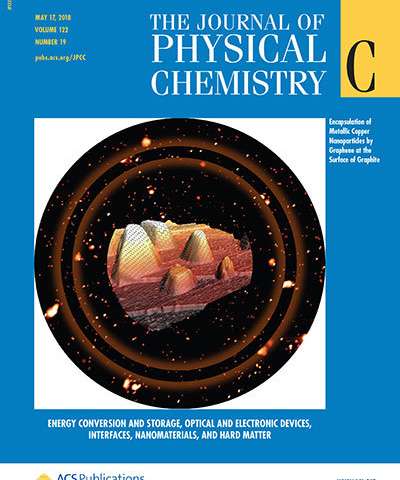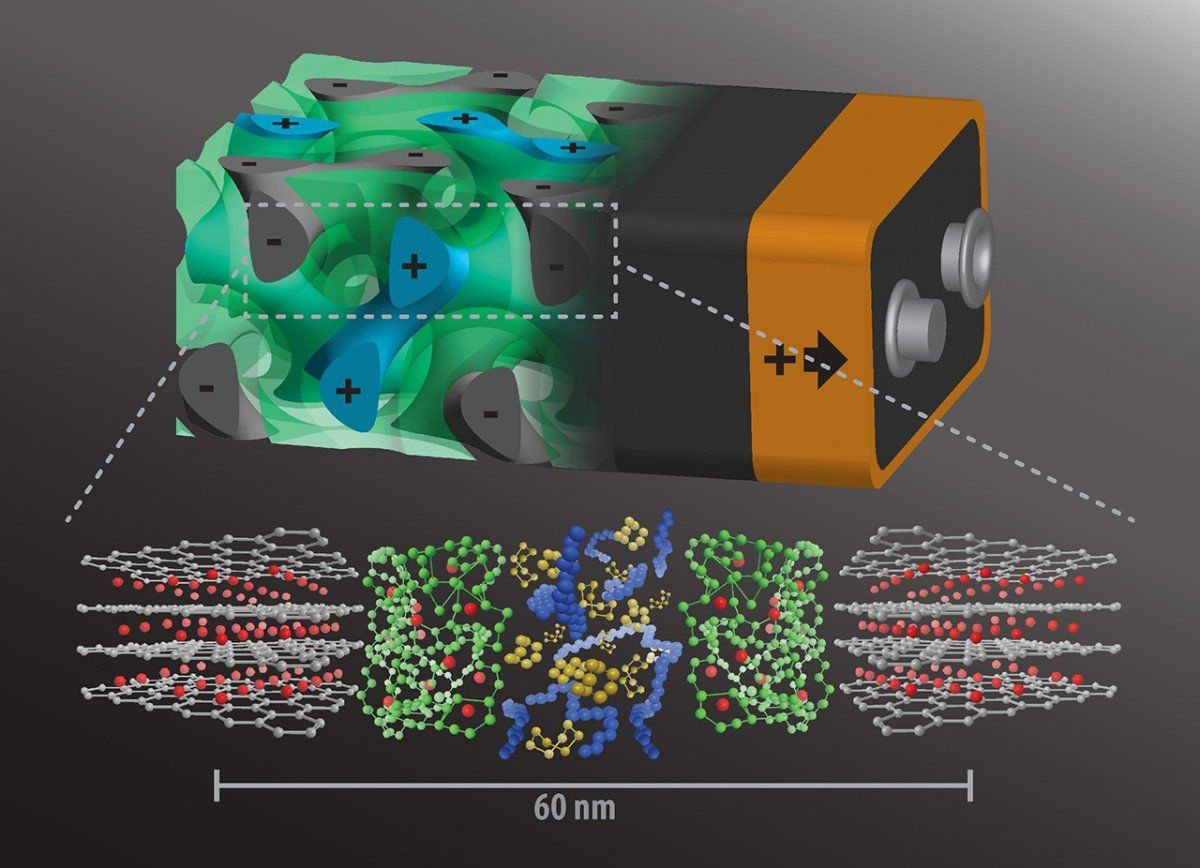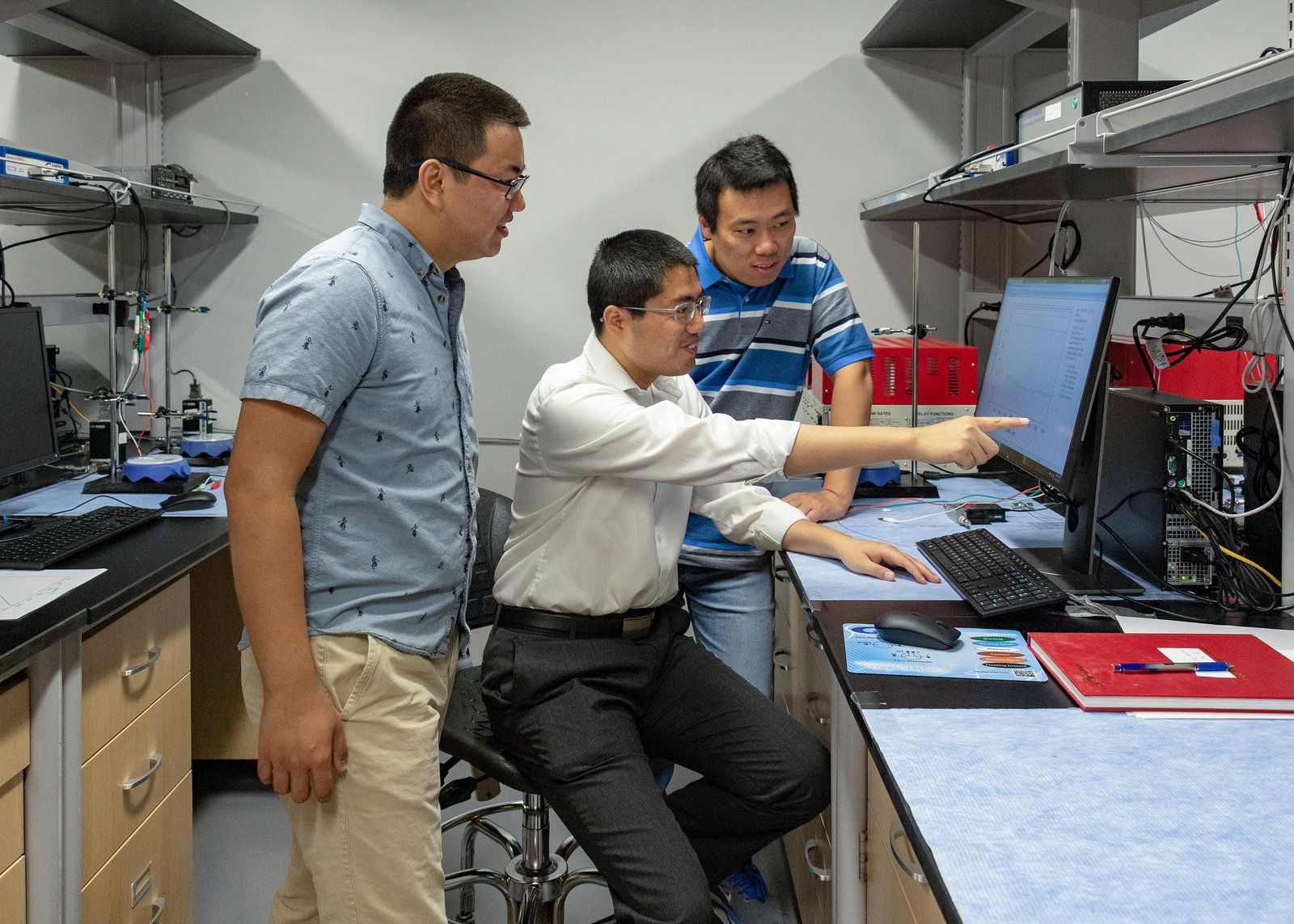Category: energy – Page 361

Newly discovered copper and graphite combo could lead to more efficient lithium-ion batteries
A first-of-its-kind copper and graphite combination discovered in basic energy research at the U.S. Department of Energy’s Ames Laboratory could have implications for improving the energy efficiency of lithium-ion batteries, which include these components.
“We’re pretty excited by this, because we didn’t expect it,” said Pat Thiel, an Ames Laboratory scientist and Distinguished Professor of Chemistry and Materials Science and Engineering at Iowa State University. “Copper doesn’t seem to interact strongly or favorably with graphitic materials at all, so this was a big surprise. It really challenges us to understand the reasons and mechanisms involved.”
The scientists bombarded graphite in an ultra-high vacuum environment with ions to create surface defects. Copper was then deposited on the ion-bombarded graphite while holding it at elevated temperature, at 600–800 K. The synthetic route created multilayer copper islands that are completely covered by graphene layer(s).

Advanced biofuels can be produced extremely efficiently
A chance to switch to renewable sources for heating, electricity and fuel, while also providing new opportunities for several industries to produce large numbers of renewable products. This is the verdict of researchers from Chalmers University of Technology, Sweden, who now, after 10 years of energy research into gasification of biomass, see an array of new technological achievements.
“The potential is huge! Using only the already existing Swedish energy plants, we could produce renewable fuels equivalent to 10 percent of the world’s aviation fuel, if such a conversion were fully implemented,” says Henrik Thunman, Professor of Energy Technology at Chalmers.
How to implement a switch from fossil-fuels to renewables is a tricky issue for many industries. For heavy industries, such as oil refineries, or the paper and pulp industry, it is especially urgent to start moving, because investment cycles are so long. At the same time, it is important to get the investment right because you may be forced to replace boilers or facilities in advance, which means major financial costs. Thanks to long-term strategic efforts, researchers at Sweden´s Chalmers University of Technology have now paved the way for radical changes, which could be applied to new installations, as well as be implemented at thousands of existing plants around the globe.


World-class battery storage system helps to power country town
A new energy storage system developed by University of Adelaide researchers and industry partners is now successfully supporting the electricity network for the country town of Cape Jervis, South Australia.
The new, world-class system is part of a $3.65 million trial led by the University of Adelaide in collaboration with SA Power Networks and system supplier PowerTec. The project is supported by the Australian Renewable Energy Agency (ARENA) on behalf of the Australian Government with $1.44 million in grant funding.
The mobile battery energy storage system and its specialised control system reduces peak load of the local substation, stabilises the electricity network in the area, and supports a number of nearby customers in the event of a power interruption – all without manual intervention.

Self-assembling 3D battery would charge in seconds
The world is a big place, but it’s gotten smaller with the advent of technologies that put people from across the globe in the palm of one’s hand. And as the world has shrunk, it has also demanded that things happen ever faster—including the time it takes to charge an electronic device.
A cross-campus collaboration led by Ulrich Wiesner, professor of engineering in the at Cornell University, addresses this demand with a novel energy storage device architecture that has the potential for lightning-quick charges.
The group’s idea: Instead of having the batteries’ anode and cathode on either side of a nonconducting separator, intertwine the components in a self-assembling, 3D gyroidal structure, with thousands of nanoscale pores filled with the elements necessary for energy storage and delivery.


A green approach to making ammonia could help feed the world
A UCF research team with collaborators at Virginia Tech have developed a new “green” approach to making ammonia that may help make feeding the rising world population more sustainable.
“This new approach can facilitate ammonia production using renewable energy, such as electricity generated from solar or wind,” said physics Assistant Professor Xiaofeng Feng. “Basically, this new approach can help advance a sustainable development of our human society.”
Ammonia, a compound of nitrogen and hydrogen, is essential to all life on the planet and is a vital ingredient in most fertilizers used for food production. Since World War I, the ammonia in fertilizer has been primarily produced using the Haber-Bosch method, which is energy and fossil-fuel intensive. There have been substantial obstacles to improving the process, until now.

Why the Discovery of Room-Temperature Superconductors Would Unleash Amazing Technologies
Superconductors are among the most bizarre and exciting materials yet discovered. Counterintuitive quantum-mechanical effects mean that, below a critical temperature, they have zero electrical resistance. This property alone is more than enough to spark the imagination.
A current that could flow forever without losing any energy means transmission of power with virtually no losses in the cables. When renewable energy sources start to dominate the grid and high-voltage transmission across continents becomes important to overcome intermittency, lossless cables will result in substantial savings.
What’s more, a superconducting wire carrying a current that never, ever diminishes would act as a perfect store of electrical energy. Unlike batteries, which degrade over time, if the resistance is truly zero, you could return to the superconductor in a billion years and find that same old current flowing through it. Energy could be captured and stored indefinitely!

If we can’t recycle it, why not turn our waste plastic into fuel?
Australia’s recycling crisis needs us to look into waste management options beyond just recycling and landfilling. Some of our waste, like paper or organic matter, can be composted. Some, like glass, metal and rigid plastics, can be recycled. But we have no immediate solution for non-recyclable plastic waste except landfill.
At a meeting last month, federal and state environment ministers endorsed an ambitious target to make all Australian packaging recyclable, compostable or reusable by 2025. But the ministers also showed support for processes to turn our waste into energy, although they did not specifically discuss plastic waste as an energy source.
The 100% goal could easily be achieved if all packaging were made of paper or wood-based materials. But realistically, plastic will continue to dominate our packaging, especially for food, because it is moisture-proof, airtight, and hygienic.